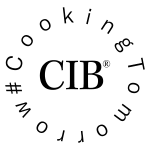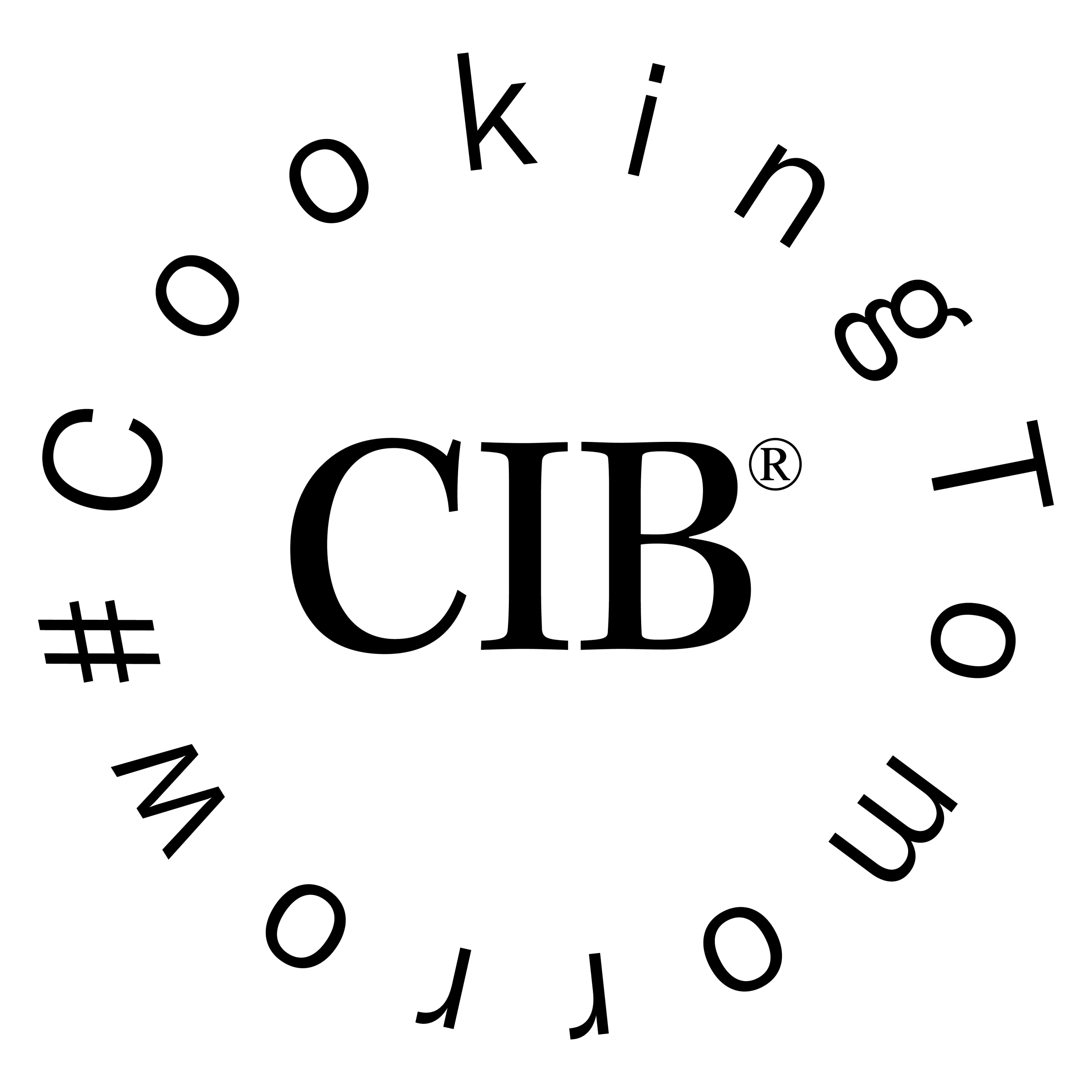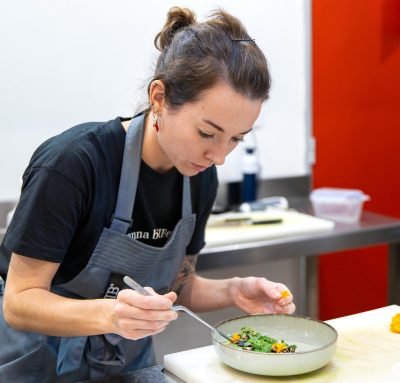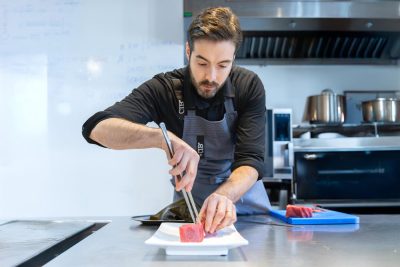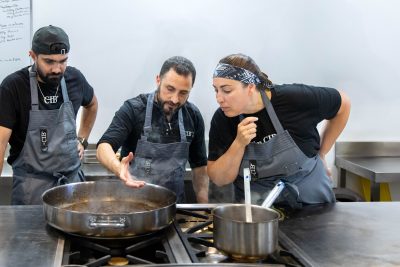The entrepreneurship sector has undergone significant growth in recent years, driven by the technological, social, and economic boom. The current digital transformation, globalization, and the ease of collaboration between entrepreneurs from around the world, as well as the declining popularity of contracts and the drive to seek independent work are giving rise to a diverse and dynamic ecosystem, where creative ideas have the opportunity to flourish and transform into successful businesses.
However, today, 90% of entrepreneurial projects and startups disappear by their fourth year. This is mostly due to the fact that entrepreneurs are not sufficiently trained to establish and grow their businesses.
Therefore, in this blog, we will explore some essential aspects and best practices to take into account in order to get your gastronomic business in the food industry off the ground and booming.
1. Outline your idea: identity and value proposition
Any successful business in the gastronomic industry needs an identity. This is the combination of key elements that will define your value proposition. It goes beyond just offering a selection of dishes; it involves establishing a unique vision, mission, and values that are reflected in every aspect of your business.To create a strong gastronomic identity, it is vital to understand who you are as a chef, restaurateur or entrepreneur, and what the story is behind your brand and the business you want to run. Here are some key points to help develop your identity:
- Reflect on your values and passions: Identify what your motivation is in the restaurant industry. Ask yourself what are your culinary values, influences, and passions related to food and cooking.
- Tell your story: The narrative behind your business is powerful. Communicate your ideas assertively and how they relate to what makes your brand special. This will also allow you to communicate your value proposition with your potential market.
- Define your value proposition: Based on your values and market analysis, identify what makes you unique. We recommend using the Business Model Canvas tool.
Your value proposition is the statement that concisely and convincingly summarizes what makes your gastronomic venture so special and why customers should choose you over the competition. Bear in mind:
- Understand your target audience: You need to understand who you are targeting. Research and understand your audience: what are their insights, tastes, culinary preferences, needs, and expectations. This will allow you to tailor your proposition to meet their specific needs.
- Identify what makes you unique: Examine your gastronomic business and highlight what makes you unique and special.
- Highlight the benefits: An effective value proposition should focus on the benefits, also known as “delights”, that you bring to your customers.
- Emphasize the quality and provenance of ingredients: Customers increasingly value the quality of ingredients and their provenance.
- Ensure consistency: Your value proposition must be consistent across all customer interactions.
- Communicate clearly and concisely: An effective value proposition should be easy to understand and communicate. Use clear and concise language to convey your messages effectively.

2. Undertake market research
Once you understand your customers’ needs and preferences and have analyzed the competitive landscape around you, you can make informed decisions and design an effective strategy to stand out in the culinary industry. To do this, here are some practical tools:
- Interviews and focus groups: these two tools allow you to dig deeper into your customers’ needs and desires. Through direct interaction, you can obtain more detailed qualitative information and better understand the factors that influence your potential customers’ purchasing decisions.
- Social media trend analysis: This is a must in order to discover consumer trends and preferences. Some sites that can be helpful are Hootsuite, Sprout Social, or Buffer to monitor mentions of keywords related to gastronomy and catering in general.
- Site visits and competitor analysis: Observe the type of customers they attract, analyze their menus, prices, and promotions, and take note of their service style and ambiance. This analysis will help you better understand the position of the competition and find ways to differentiate yourself and stand out in the market.
- Build the SWOT of your business: Determine what strengths and opportunities your business presents after analyzing the entire competitive market. It will help you create your competitive framework.
- Surveys and questionnaires: Collect direct data from consumers. Platforms such as Google Forms, SurveyMonkey, or Typeform allow you to create customized surveys and send them to your target audience. Design clear and concise questions to obtain information about their culinary preferences, past experiences, and expectations regarding a gastronomic business.
3. Write a solid business plan
Creating a solid business plan will help you structure your ideas and ground them in an executable action plan with defined goals. This roadmap gathers the information you’ll need to clarify objectives, identify strengths and weaknesses, determine necessary resources, design short, medium and long term plans, as well as identify risks and opportunities you may have.
Here is a basic structure you can follow to create your business plan:
- Executive summary: Brief and concise description of your business, its main objectives, and a summary of the most important aspects of the plan.
- Business description: Detailed explanation of your business idea and what problems or insights it solves. Description of the products you will offer and information about your target market and the demand you have identified. The market analysis you have done previously.
- Marketing strategy: Marketing plan (offline & online), the branding and positioning strategies you will execute, and details about the distribution channels you will use.
- Organization and management: Define the organizational structure of your business, as well as the profiles of the key members of your team and the description of the responsibilities and functions they will carry out.
- Product or service: Detailed description of what you offer, as well as all relevant information about the product life cycle.
- Operations plan: Explanation of how daily operations will be carried out, the production process, and everything related to the resources and suppliers you will need.
- Financial strategy: Financial projections, including revenues, expenses, and cash flow. An analysis of financial risks and mitigation strategies, as well as the financing you will need and how those funds will be used.
Thanks to the digital transformation over recent years, we suggest you consider different business models that have gained relevance. Considering a combination of some of them can lead to a very interesting and more scalable omni-channel proposal.
For your business to have good long-term solvency, you need to focus on the scalability of your business and take it into account in the financial planning of your gastronomic venture, as it will allow you to manage your financial resources more effectively.

4. Establish an adequate budget
Before focusing on establishing a budget, we will talk about one of the most important points for those who decide to start a business, securing capital. In most cases, you’ll need to write an investment plan that involves searching for investors in order to obtain the required financing. Depending on the stage of the project, it is possible to access different types of investors.
Below, we tell you about some of them:
- Business angels: these are people who invest their own capital in early stage ventures. Often, these investors have experience in entrepreneurship and can provide valuable advice and contacts.
- Venture capital: is provided by investment firms that invest in growing companies that have high return potential. It is an option best suited for ventures that have already demonstrated a certain level of growth and scalability.
- Incubators and accelerators: These are programs designed to support early-stage ventures by providing funding, mentoring and resources. These programs usually have a defined duration and, in exchange for support, they can acquire a stake in the business.
- Crowdfunding: A form of funding that involves a group of people contributing small amounts of money to support a specific project.
A vital tool for managing investor relations is to have a strong Elevator Pitch. This is a brief presentation of your business, between 30 seconds to 2 minutes, that allows you to communicate your proposal effectively even if you meet an investor during an elevator ride. The idea is to quickly capture the attention of the interlocutor and convey the key points clearly and persuasively.
Having a clear idea of the capital, it is time to structure a budget, which will ensure the long-term viability and profitability of your business. Conduct detailed research, estimate your production costs, and consider operating and overhead expenses. Know your competition and target market to effectively tailor your offering. Set realistic financial goals and review and adjust your budget periodically. With sound financial planning, you are more likely to be better prepared to face the challenges of a growing business.

5. Find reliable suppliers
The supply of consistently high-quality ingredients and products is one of the reasons why the right choice of suppliers is crucial to maintain the excellent standards of the products you are going to offer and ensure your customers’ satisfaction. Here are some tips:
| ✅ Research the market to identify potential suppliers. | ✅ Read reviews and testimonials from other customers to assess reputation and reliability. |
| ✅ Request samples of their products to evaluate their quality before establishing a business relationship. | ✅ Check if suppliers comply with health and food safety rules and regulations. |
| ✅ Make sure they have enough inventory and can fill your orders on time. | ✅ Customer service and effective communication are important for a successful business relationship. |
6. Build a committed team
A cohesive and committed team is necessary to maintain operational efficiency and thus achieve long-term goals. Always start with open and transparent communication to build trust and commitment among your team members. Both the vision and the achievements of the business are information they must know, both to understand where the business is going and to feel part of the wins.Fostering collaboration and teamwork is key to building a positive and productive work environment. A team that works together in a unified and coordinated manner will be more efficient and provide an exceptional customer experience.
7. Develop your branding
Creating an attractive gastronomic concept is part of the value proposition of any gastronomic venture, so the next step will be constructing your brand. This process is known as branding and allows you to connect your brand with consumers.This means going beyond the design of a logo or the decoration of a physical location, it is about creating a unique identity that connects emotionally with customers and invites them to return again and again. Let’s explore some ideas:
| The visual identity should reflect the essence of your brand. Develop a consistent brand manual, logo, color palette and consistent typography to be used in all communication materials. | The value proposition must be visible, so communicating it at all points of contact with customers generates brand consistency. |
| The details in the customer experience matter. From the quality of the food, to the service, to the setting. It all reflects your brand identity. | Consistency is key. Develop a discourse for the brand, using a tone that suits its personality. |
8. Promote your business
Structuring a true sales and marketing strategy in order to effectively promote your business will allow you to stand out among the different players and generate a positive impact in the minds of consumers. Before starting any strategy, and as we have said before in this blog, it is essential to be clear about your value proposition: What differentiates you from the competition? What is your culinary approach? What does your customer journey look like?
Identify the touchpoints of your target audience to tailor your communication strategy, research their consumption habits, culinary preferences, and behavior at the local level. In order to develop an effective digital strategy, it is necessary to understand the anthropological behavior of the consumerin order to communicate with them through the channels they use, the tone they expect, and the content that is relevant to them.
Identify also those digital assets that you should have built: a website? A delivery application? Or will you work with third parties? How does the user search for restaurant offers? Which social networks should you use to create a community of customers? Share regular content, create a good brand reputation by responding to your customers’ comments and messages, and use your levers to generate long-lasting brand recall that is sustained by your customers’ own interests.
Also, take into account the physical space your business occupies: where is it positioned, is there an organic influx of people, or do you have to attract them? How do you generate street interest for your local audience? You can take advantage of printed material that is visual and participate in relevant events or fairs, collaborations, referral strategis, etc.
You will have to establish strategic alliances between both environments.

9. Offer exceptional customer experience
In the food industry, customer experience is a determining factor for the success and reputation of a business. It is not only about offering delicious dishes, but also about generating an experience. This implies achieving a welcoming atmosphere, impeccable service and personalized details that makes diners feel valued.
The ambiance and decoration of the establishment also play an important role in the customer’s perception. Create an inviting space that reflects your brand identity. Adequate lighting, ambient music, and carefully arranged furniture will help customers feel comfortable and enjoy their visit.
Also monitor the workflow, customer service and production logistics. Everything has to be transparent. Everything is perceptible.
10. Make a commitment to proper training
These advice we have given you is just the tip of the iceberg.
Thats why at the CIB · Culinary Institute of Barcelonawe have created the DCS Design, Creation, and Strategy of Restaurant Business, an on-site program in Barcelona for anyone who wants to create, design, and/or update their restaurant proposal from a disruptive and innovative mindset, that’s adapted to 21st century values.
Is Barcelona a good city to start a business? Well, according to the Startup Heatmap Europe report published by DEEP Ecosystem, for the fourth consecutive year, it sits among the top 3 most attractive cities for entrepreneurship in Europe. Barcelona undoubtedly has one of the most favorable and dynamic environments in which to start a business.
